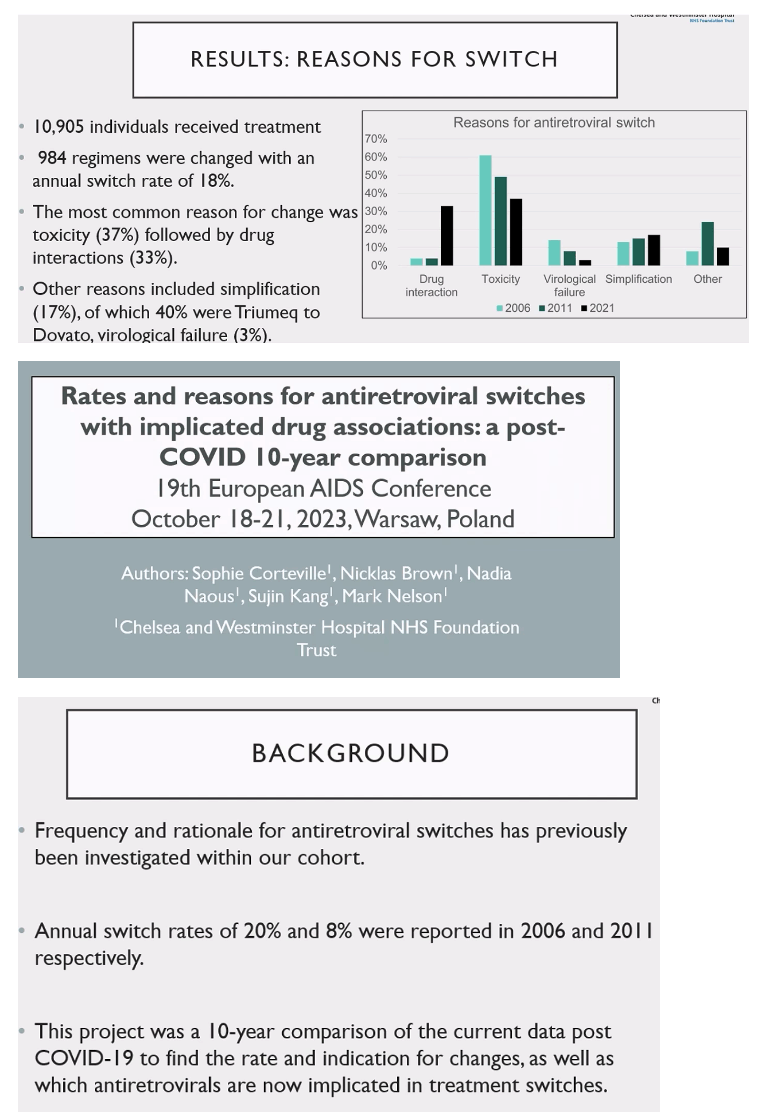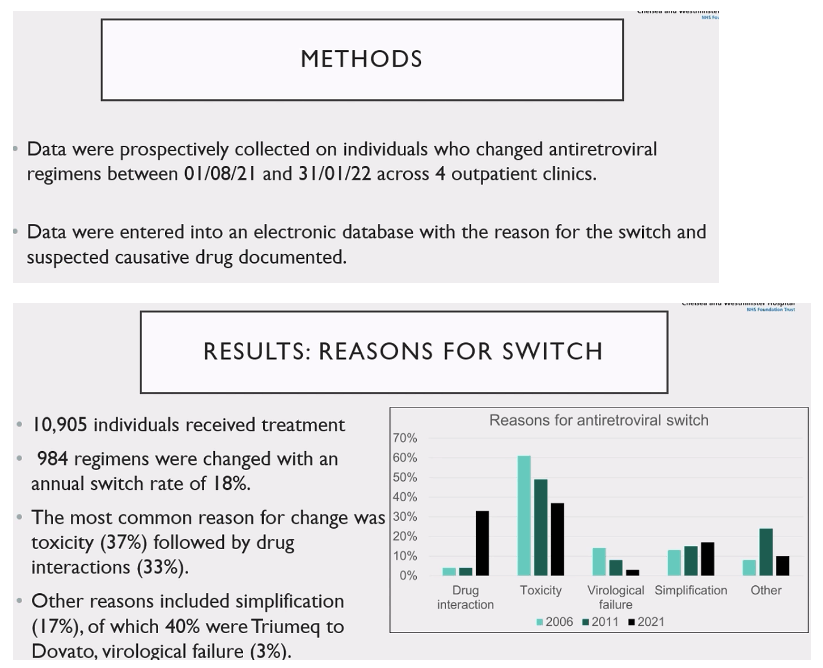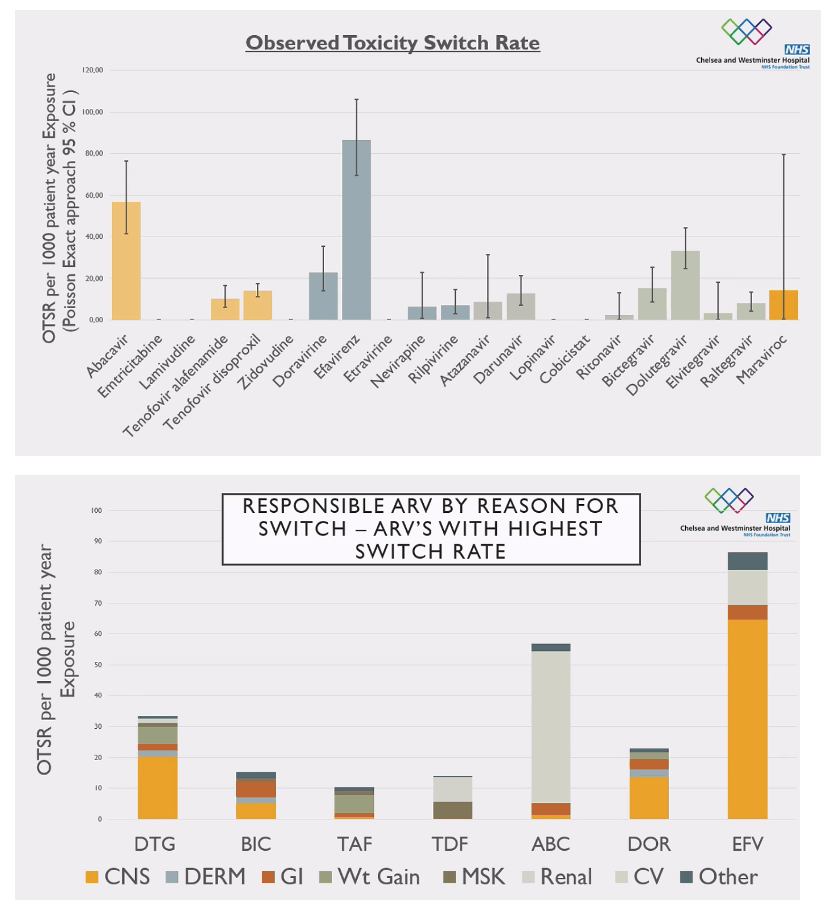 |
 |
 |
| |
Annual Antiretroviral Switch Rate Jumps From 8% to 18% in Last Decade
|
| |
| |
EACS 2023, October 18-21, 2023, Warsaw
Mark Mascolini
Since 2011 the annual antiretroviral switch rate vaulted from 8% to 18% at a big London hospital with a large HIV population [1]. Among reasons for switching, drug-drug interactions ballooned the most over the study period, from 4% to 33%.
At London's Chelsea and Westminster Hospital, annual antiretroviral switch rates fell by more than half-from 20% to 8%-in studies done in 2006 and 2011. Repeating this exercise with current clients, researchers prospectively collected data on individuals seen at four outpatient clinics who changed their antiretroviral mix between August 2021 and January 2022.
This inquest involved 10,905 people receiving treatment for HIV infection. Their 984 regimen changes over the 6-month study period translated into an 18% annual switch rate. Toxicity led the field as a reason to switch, at 37%. But that rate fell steeply from about 60% in 2006 and 50% in 2011. Drug-drug interactions came in second as a reason to switch in 2021 with a 33% rate that rocketed from 4% in 2006 and 2011. The researchers suggested an aging HIV population with multiple comorbidities could account for the surge in drug-interaction switching.
Regimen simplification took third place among 2021 reasons to switch, at 17%, a marginal climb from 2006 and 2011. Virologic failure barely registered below 5% as a switch rationale, its frequency falling from 2006 and 2011.
Efavirenz handily won the antiretroviral toxicity switch race with an observed toxicity switch rate (OTSR) above 80 per 1000 person-years. Abacavir took second place with an OTSR close to 60 per 1000 person-years. A contemporary star integrase inhibitor-dolutegravir-came next with an OTSR just above 30 per 1000 person-years. The next five toxicity culprits all earned an OTSR just below 20 per 1000 person-years: doravirine, bictegravir, tenofovir disoproxil fumarate (TDF), tenofovir alafenamide (TAF), and darunavir.
Central nervous system side effects accounted for most switches from efavirenz, but also from the integrase inhibitor dolutegravir and the new nonnucleoside doravirine. Cardiovascular worries fueled toxicity switching from abacavir, and kidney complaints drove toxicity switching from TDF, as switches from this drug doubled. The researchers surmise TDF switches soared because it got displaced not only by TAF, but also by two-drug combinations.
Reference ;
1. Corteville S, Brown N, Naous N, Kang S, Nelson M. Rates and reasons for antiretroviral switches with implicated drug associations: a post-COVID 10-year comparison. EACS 2023, October 18-21, 2023, Warsaw. Abstract RA2.08.




|
| |
|
 |
 |
|
|